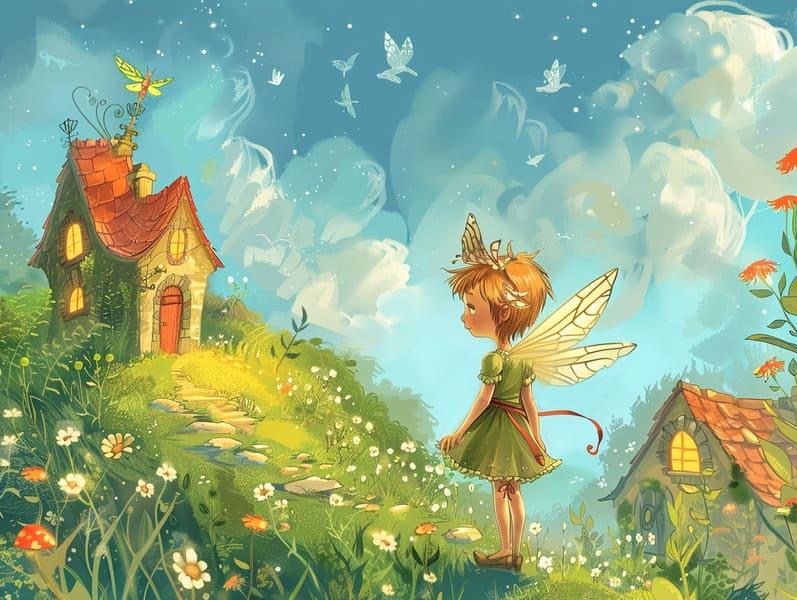The Emergence of Classic Fairy Tales and Their Everlasting Captivation.
The Emergence of Classic Fairy Tales and Their Everlasting Captivation.
Blog Article

Short fairy tales have old origins. These narratives have been narrated from one generation to the next centuries before they were ever put on paper. They came from a variety of backgrounds, including African traditions. They were initially shared among elders, often carrying themes and messages reflective of the societal norms and beliefs of the time.
Jacob and Wilhelm Grimm, the two Grimm brothers, were among the first to gather and publish many of these beloved tales. Their published works, "Grimm's Folk Tales," included classics like "The Story of Cinderella," "The Story of Hansel and Gretel," and "Schneewittchen," which have since become pillars in the world of famous fairy tales. Similarly, Hans Andersen's fantastical fairy tales, such as "The Mermaid's Tale," and "The Duckling that Could," have captivated hearts worldwide, establishing their place in the pantheon of famous fairy tales.
Despite their historical roots, these stories remain as relevant as ever, especially as children's bedtime stories. These enchanting tales are now available in numerous formats, including colorful picture books, charming animations, and digital storybooks.
Their unwavering allure can be connected to several delightful features:
Significant Morals: Ancient fairy tales often teach important moral lessons. Fairy tales like "The Wolf and the Liar" teach the significance of integrity, while "The Hare and the Tortoise" illustrate the virtues of perseverance and humility. These narratives offer the young clear distinctions between truth and falsehood, developing their moral compass in a tender yet meaningful way.
Compassion and Knowledge: Traditional fairy tales frequently present figures facing challenges and problems, stimulating young listeners to empathize with their struggles and champion their triumphs. For instance, "The Story of Beauty and the Beast" teaches us the merit of seeing inner beauty to comprehend the true character of a person, enhancing insight and knowledge.
Cultural Perception: Many classic fairy tales are imbued with the cultural contexts from which they sprang. Delving into these fairy tales can provide fascinating glimpses into different backgrounds, fostering a sense of global awareness and knowledge.
Fantasy and Imagination: The imaginative elements in fairy tales—mythical creatures—engender children’s inventiveness. These narratives move readers to supernatural realms, kindling fantasy dreams and a sense of awe that endures a lifetime.
Old fairy tales are not only charming but also didactic. They serve as entrancing tools in developing various cognitive and emotional skills in young readers. When classic fairy tales are recited, they promote language skills by showing new lexicon and detailed sentence structures. This practice also enhances listening abilities and mental focus, as young readers hang on every word, ready to see what happens next.
Furthermore, reflecting on the themes and characters of fairy tales can improve reasoning skills and analytical skills. Young ones are instructed to see patterns, expect results, and figure out cause and effect. These debates also boost little ones articulate their thoughts and feelings, cultivating their emotional intelligence.
In today’s digital era, the accessibility of internet fairy tales has made these narratives more reachable than ever. Digital sites and web apps supply broad selections of ancient fairy tales that can be enjoyed or listened on anytime, anywhere. Fairy tales recited are particularly widespread, giving an immersive method for young ones to take part in these enchanting tales. Sound books and read-out-loud stories lead characters and settings to life, often accompanied by bewitching sound effects and musical scores that improve the tale experience.
The timeless appeal of old fairy tales lies in their ability to change to new eras while holding onto their key morals. Contemporary reimaginings of these tales often present more diverse protagonists and modern settings, making them relevant to today’s audience. However, the underlying themes of braveness, warmth, and impartiality remain unchanged, continuing to touch young listeners of all ages.
Traditional fairy tales also offer a sense of calm and predictability. They make available a tidy narrative with a apparent beginning, middle, and end, often winding up with the finalization of conflicts and the triumph of morality over wickedness. This predictability find it here can be placating for the young, providing a sense of dependability in an ever-changing world.
Traditional fairy tales continue to spellbind and coach new generations, maintaining their magic and importance in modern society. As bedtime stories for kids, they feature a perfect blend of wonder and wisdom, fostering moral values, empathy, and creativity. The presence of online fairy tales and the commonness of fairy tales recited promise that these ancient stories remain acquirable to new generations.
By holding onto and communicating these fairy tales, we continue to recognize the rich tapestry of tradition and cultural heritage. Whether you are seeing a colorful picture book, accessing a virtual library, or playing an voice book, the charm of Grimm's fairy tales is always within reach. These tales illustrate of the eternal nature of storytelling and its ability to unite us across epochs and places.
No matter if you are delving into a vividly illustrated book, enjoying a online collection, or playing an spoken story, the elegance of timeless fairy tales is always within reach.
These stories remind us of the undying force of stories and its ability to gather us across epochs and places, weaving a spell that fascinates and enlightens alike.